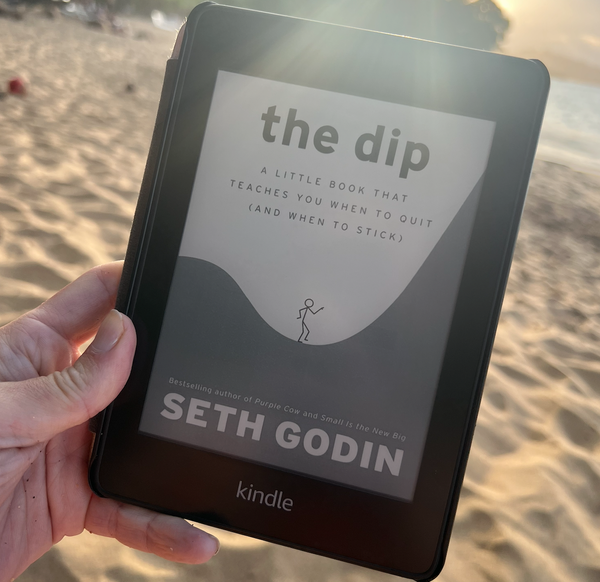AI’s Next Battle: Model Builders vs. the Gatekeepers Controlling Distribution
Model builders are pushing AI forward, but tech giants still control how it reaches the masses.

AI model releases dominate the headlines.
Each new drop promises smarter and faster models. GPT-4.5, Claude 3.7, Grok3. Who’s up? Who’s down?
If you zoom out, none of that matters.
AI’s future won’t be decided by who builds the best model. Dominance will be won by the companies that control how AI is distributed, accessed, and monetized to the masses.
That battle is being fought by two groups:
- Model builders pushing AI to its limits
- Big-tech gatekeepers deciding who gets to use it
Model Builders: The Key Players & Strategies
These companies are the ones competing to push AI capabilities to the limit, racing to develop the most powerful models in a sprint towards AGI. They create the models AI enthusiasts turn to and get excited about.
While they may be leading the way now, no matter how good their models get, they'll still need distribution, data, and infrastructure to win long-term.
OpenAI: The Market Leader (For Now)
- The dominant LLM company, reliant on Microsoft’s cloud and funding.
- Faces pressure as rivals release better models and close the gap.
- Pushing into AI agents (ChatGPT Operator, Tasks, Deep Research, memory).
- Newly exploring the development of physical products like robots, smart devices, and wearables
Anthropic: The Safe AI Alternative
- Backed by Google and Amazon, positioning itself as the “trustworthy” AI provider.
- Prioritizing ethical alignment and safety over raw performance.
- Slow but steady improvements, with Claude models gaining traction.
xAI: The Elon Factor
- Built as an “uncensored” alternative, betting on demand for less restriction.
- Heavily integrated into X (Twitter), aiming for an AI-powered ecosystem.
- Launched Grok3, positioning it as a top competitor to other AI models.
Perplexity: The AI Search Challenger
- Positioning itself as a key player in AI-driven search and information retrieval.
- Focused on providing users with more accurate, context-aware answers.
- Introduced Deep Research, accelerating in-depth question answering.
DeepSeek: The Open Innovator
- A government-backed AI push to reduce reliance on Western models.
- Released competitive model with open weights, emphasizing efficiency and quick iteration.
- Focused on long-term AI development for national security, despite the initial hype.
The Model Builder Problem?
Despite leading the charge in AI innovation, model builders face a critical roadblock: distribution.
Even the most advanced models need infrastructure, data, and access to users in order to scale. As new players continue to enter the space, their challenge will go beyond building better models, as they look to secure the channels that will help them reach the masses. The race to lead AI is about access and infrastructure as it is intelligence. The companies that can align both will ultimately shape the future of AI.
Big-Tech Gatekeepers: The Key Players & Strategies
These legacy companies already control the digital infrastructure, platforms, and user bases that will define how AI is accessed and integrated. They hold the keys to distribution channels that connect AI models to consumers and businesses at scale.
While they may not always create the most competitive models, their ability to control access and influence adoption gives them the advantage in shaping the future of AI.
Microsoft: The Corporate Powerhouse
- Owns the entire AI business stack: Azure, OpenAI, and Copilot.
- Dominating enterprise AI adoption through Office, Teams, and developer tools.
- The safest bet in AI: Every business will need AI, and Microsoft already runs business software.
Google: The Struggling Giant
- AI is an existential crisis for Google: Search is under threat.
- Rushing to integrate Gemini across all products, but still trailing OpenAI.
- Has strong AI research, but slow to execute and roll out products at scale.
- Huge opportunity to capitalize on existing traffic and web content.
Amazon: The Sleeping Giant
- AWS is the backbone of AI infrastructure, powering many startups and enterprises.
- Invested in Anthropic, gaining indirect influence over AI models.
- AI-infused Alexa+ serves as a potential trojan horse for mass adoption.
Meta: The Open-Source Wildcard
- Betting on their open-source Llama models and AI decentralization to embed AI across the internet.
- Aiming for AI assistants and chatbots to be built into every app, ensuring widespread adoption beyond a few dominant AI companies.
- Meta’s vast social apps (Facebook, Instagram, WhatsApp) provide a powerful distribution network to reach billions globally.
Apple: The Strategic Contender
- Late to AI, but controls the highest-value consumer distribution with the iPhone.
- Can integrate AI seamlessly across 1 billion+ devices overnight.
- Focuses on the best user experience, not the most powerful models.
- Investing heavily in AI (just announced $500B plan), including a new AI manufacturing facility.
Alibaba: The Chinese Leader
- Leading China’s business AI adoption, pushing open-source alternatives.
- Developing AI to compete with AWS and Google Cloud in global markets.
- Plays a major role in China’s AI and tech independence strategy.
The Big-Tech Gatekeeper Play?
The gatekeepers hold a crucial advantage: they control the distribution channels where AI will be deployed.
While they may not always create the most powerful models, their control over infrastructure and consumer ecosystems gives them the power to shape how AI is integrated into both business and daily life. In the long run, their ability to influence access and adoption could be the deciding factor in which AI models succeed and dominate.
What This Means & Where It’s Going
- The Model Race Will Plateau
- Raw model performance will get so good it will eventually level off.
- The competition will swing towards those who own the distribution layer.
- AI Won’t Be Free Forever
- While open-source AI is growing, the most advanced models will be behind paywalls.
- Big Tech is building walled gardens, where access to premium AI will come at a cost (subscriptions, models embedded into ecosystems).
- Those building AI-first systems early will have the advantage when access becomes more restricted.
- AI Will Soon Be Everywhere (But Start to Feel More Invisible)
- AI will seamlessly integrate into our lives, running in the background, rather than being an app we open.
- As AI blends into apps and services, advantage will go to the platform owners who choose which AI models to integrate.
So Who Wins?
It won’t be just the model builders or just the gatekeepers. It’ll be the companies that own both.
Right now, here are the companies doing both at scale:
- Microsoft owns OpenAI + Azure + enterprise AI.
- Amazon owns Anthropic + AWS + consumer AI (Alexa+).
- Alibaba owns Qwen + Alibaba Cloud + China’s enterprise AI.
Everyone else? They’re still dependent on someone.
- OpenAI, Anthropic, Mistral, DeepSeek, Perplexity? They rely on gatekeepers like Microsoft and Amazon for cloud infrastructure and distribution.
- Meta, Google, Apple? They still need to catch up in model development or integrate third-party models strategically.
- xAI? This is a wildcard play. If it scales inside X (Twitter), it could create its own AI ecosystem.
That said, the race is far from over. The AI landscape is moving fast, and every key player still has a path to dominance based on their unique positioning and strengths. As models improve and differences shrink, the companies that close their gaps and build a holistic AI play (intelligence + infrastructure + distribution) will lead the next era.
Want to stay ahead as AI reshapes industries?
I offer AI & Strategy Sprints to help you cut through the noise, identify real opportunities, and integrate AI in a way that gives you an edge.
DISCLAIMER: This content is for informational purposes only and does not constitute business, investment, legal, financial, or tax advice. Readers should conduct their own research and consult with professional advisors before making business decisions.





